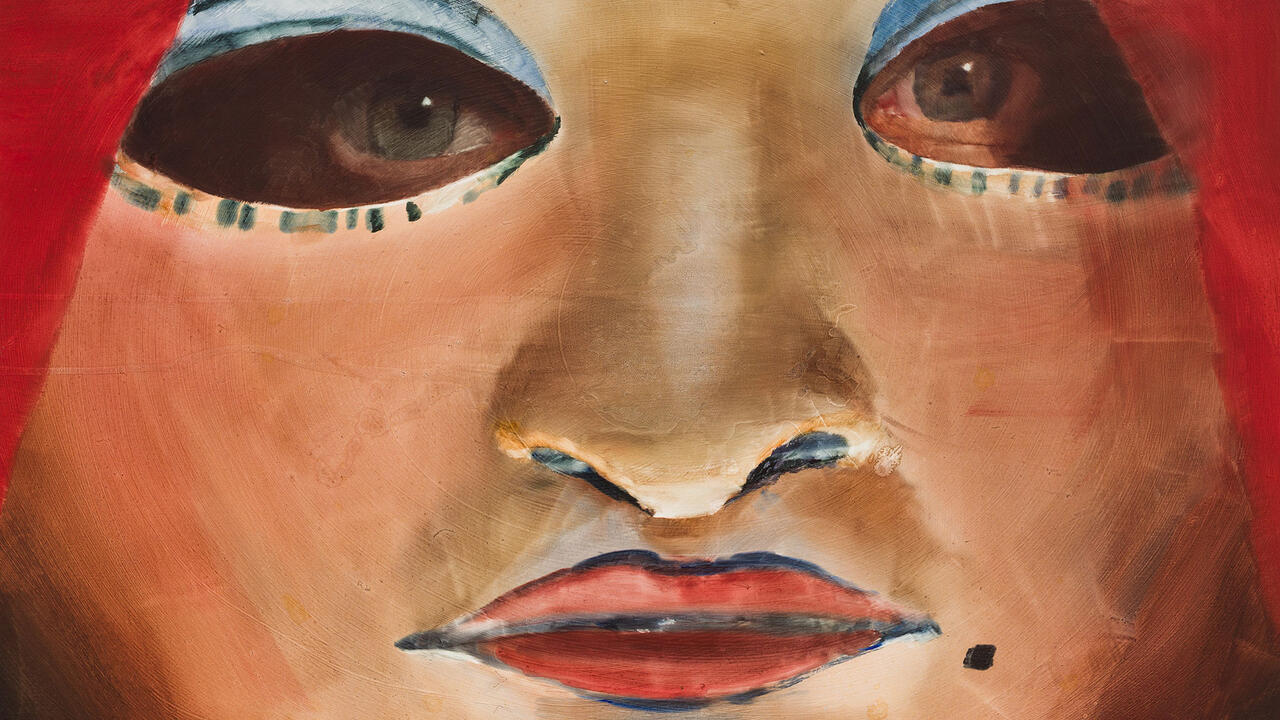Becoming Animal
The 12 artists selected for this enlightening and often unsettling show are drawn to the animal kingdom – in the words of curator Nato Thompson – ‘by an intense focus on the philosophical, medical, biological and ethical connections that bind us to [animals]’. ‘Becoming Animal’ focused on ecology, DNA blending and the politics of science, using a variety of media, including collage, installation, performance, photo-graphy, video and sculpture. Godfather of the show was the late Joseph Beuys, who, lest anyone forget, was the founder of the first political party for animals. Beuys, the animistic shaman who spent a week communing with a wild coyote in a New York gallery in 1974, was here represented simply by a photograph taken during his 1965 performance How to Explain Pictures to a Dead Hare. This famous image documents Beuys’ Duesseldorf action, in which, his face covered in honey and gold leaf, he cradled a lifeless hare in his arms and whispered to it – presumably about art – establishing an aesthetic bond not only with the animal but also with its spirit.
Mark Dion’s ongoing series of tree projects, which question the foundations of scientific classification, history, art and zoology, continued in a specially commissioned work, Library for the Birds of Massachusetts (2005). A small flock of zebra finches calmly fly around inside a cylindrical steel aviary containing a lifeless maple tree, its limbs reconfigured and transformed with plywood into library shelves filled with hundreds of natural history and science texts. (The branches also support an assortment of guns, oil cans, lead shot and a dead bird, covered in a tarry substance.) The obvious irony of the situation is that the vast amounts of taxonomical and scientific knowledge on which the finches chirp, eat and shit are nothing more meaningful than a convenient perch, while to the viewer observing from outside Dion’s caged Tree of Knowledge, the humans visitors entering the enclosure become zoo-like specimens, objects of study and curiosity.
Kathy High’s Embracing Animal (2004) was inspired by an empathetic inquisitiveness regarding three retired breeder albino lab rats whose immune systems have been severely depleted through repeated human DNA injections. Her darkened environment features a miniature indoor maze of see-through steel mesh domes, clear plastic tube-tunnels and a child’s toy barn assembled to house her adopted transgenic rodents, which she is trying to restore to some semblance of health through a regimen of love, organic food, homeopathic remedies and play. High, who suffers from auto-immune problems herself, feels a kinship for these fragile, photophobic, balding creatures, which she describes in her accompanying Rat Love Manifesto as ‘transitional combined beings […] like cousins that mirror us in ways that other animals cannot’.
Extinction and loss are the motivation behind Rachel Berwick’s moving installation Lonesome George (2005). The eponym-ous protagonist, an 80-year-old tortoise featured in two videos, is the last of his subspecies on Abingdoni, one of the Galapagos Islands. Large billowing sails, whose movement is propelled by fans that are synchronized with George’s monotonous breathing, recall the 19th-century whaling ships that hunted the island tortoises while, nearby, Darwin was formulating his theories on natural selection. A volcanic glass cast of George’s shell reminds us of his mortality and the extinction of yet another species.
Some of the most riveting works in the show exploit our fascination with monstrous cross-species. In Motohiko Odani’s short video loop Rompers (2003) a young, attractive girl with short skirt, pigtails and jaundiced eyes sits smiling on a tree branch, swinging her legs. A sweet melody plays as honey oozes below her and frogs with human ears growing from their backs leap in a trance-like circle. The fairy-tale ‘innocence’ is shattered when the mutant girl captures a fly with her long, lizard-like tongue. Elsewhere Ann-Sofi Sidén’s alter ego QM (Queen of Mud) made an appearance as a cold-blooded, crawling, slough creature hiding beneath the bed of a neurotic psychoanalyst in the riotously funny 35mm film QM, I Think I Call her QM (1997). Patricia Piccinini’s silicone, acrylic and human hair sculpture The Young Family (2002–3) depicts a fleshy human-hog monster warily nursing her triplets in a birth scene that is discomfitingly similar to Ron Mueck’s Mother and Child (2001). Whereas there is a certain realist resemblance in the careful attention given to folds of skin, body hair, genitalia and the emotional states of wonderment and exhaustion of the new mothers, Piccinini’s nativity is equal parts wonder and horror.
Most intriguing and scary about the best work in ‘Becoming Animal’ was how easy it is to destabilize and question the once firm and established boundaries between humanity and the rest of the animal kingdom. With the human capacity to radically manipulate the natural world of which we are a part, what was once the stuff of madness or fairy tales is now not only conceivable but possible. One is left wondering how supreme our place in scheme of things really is.














